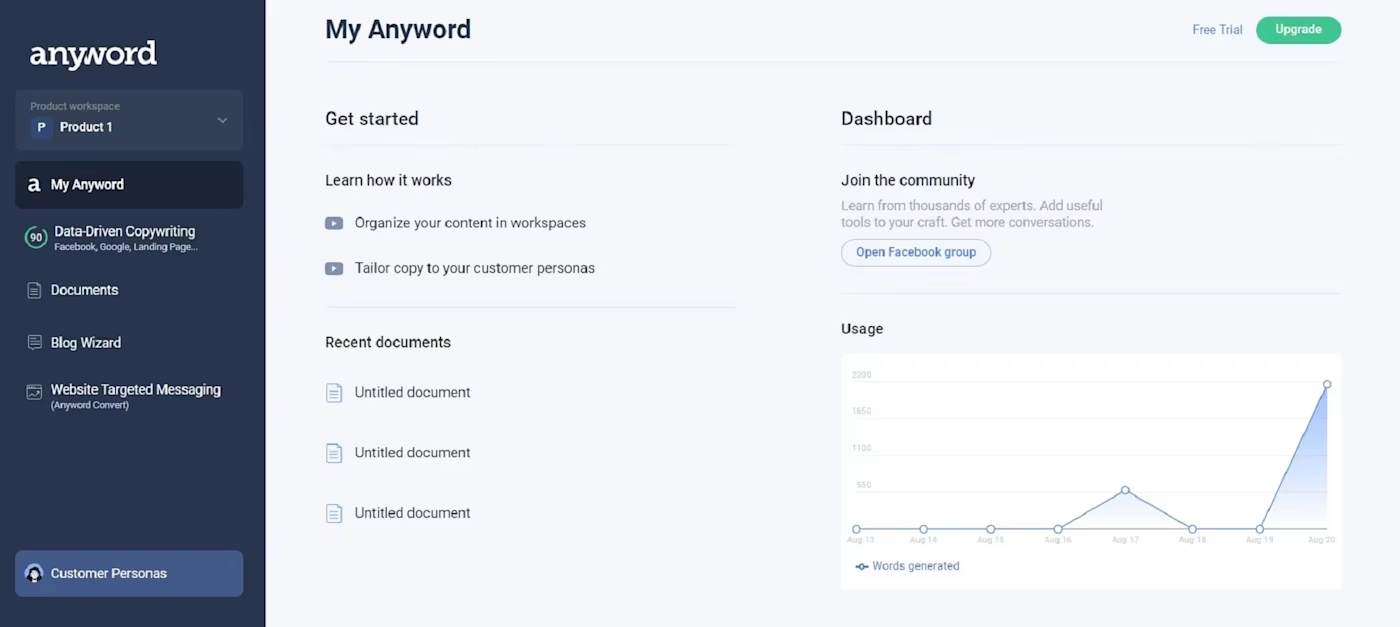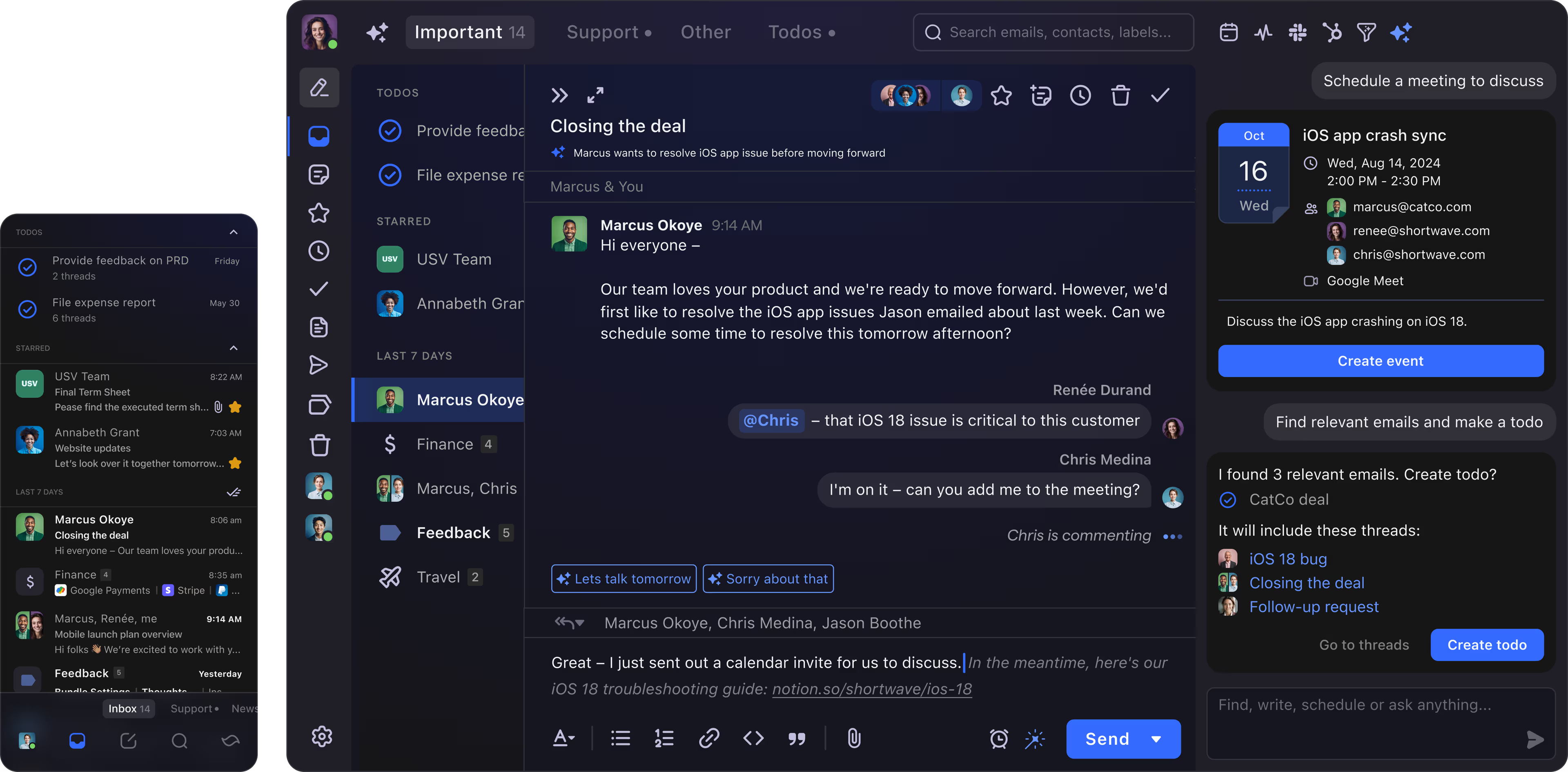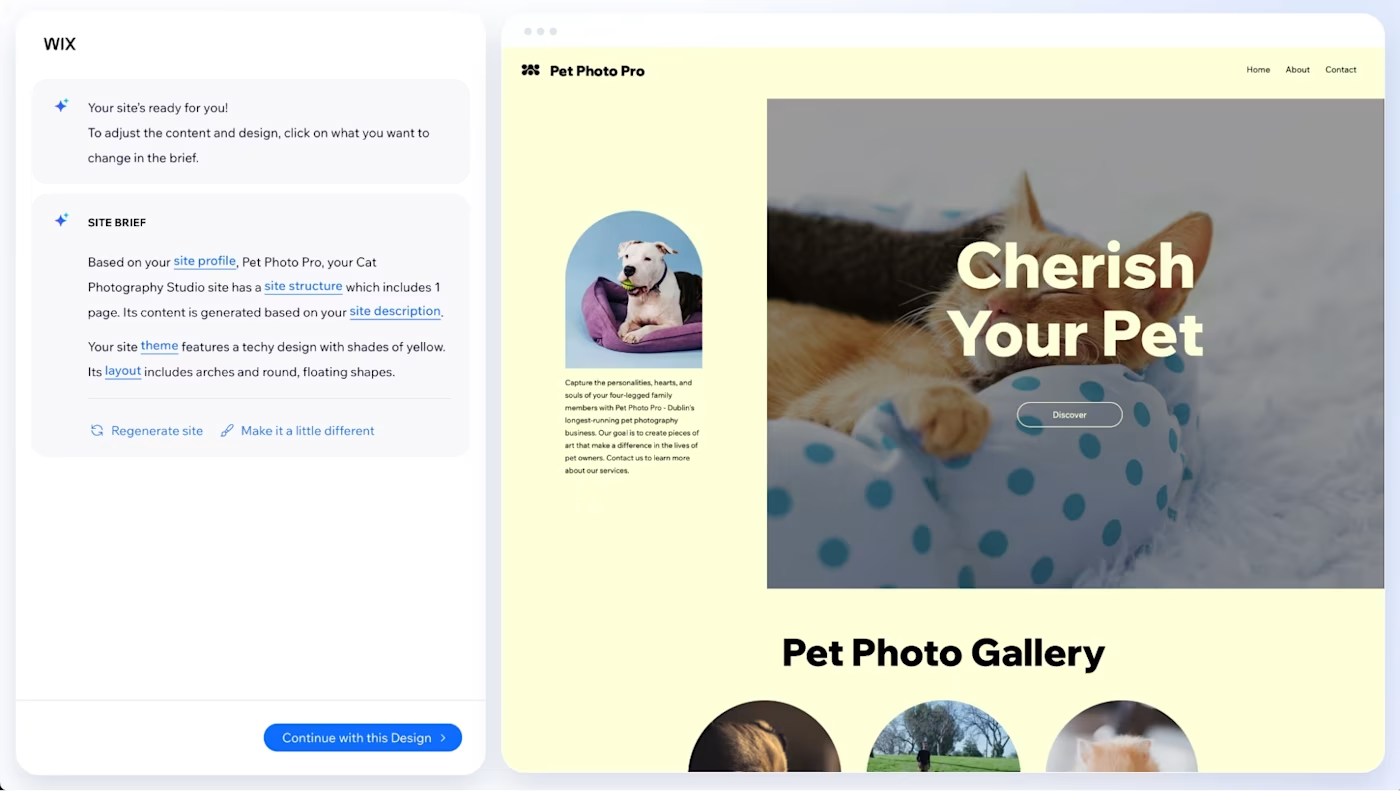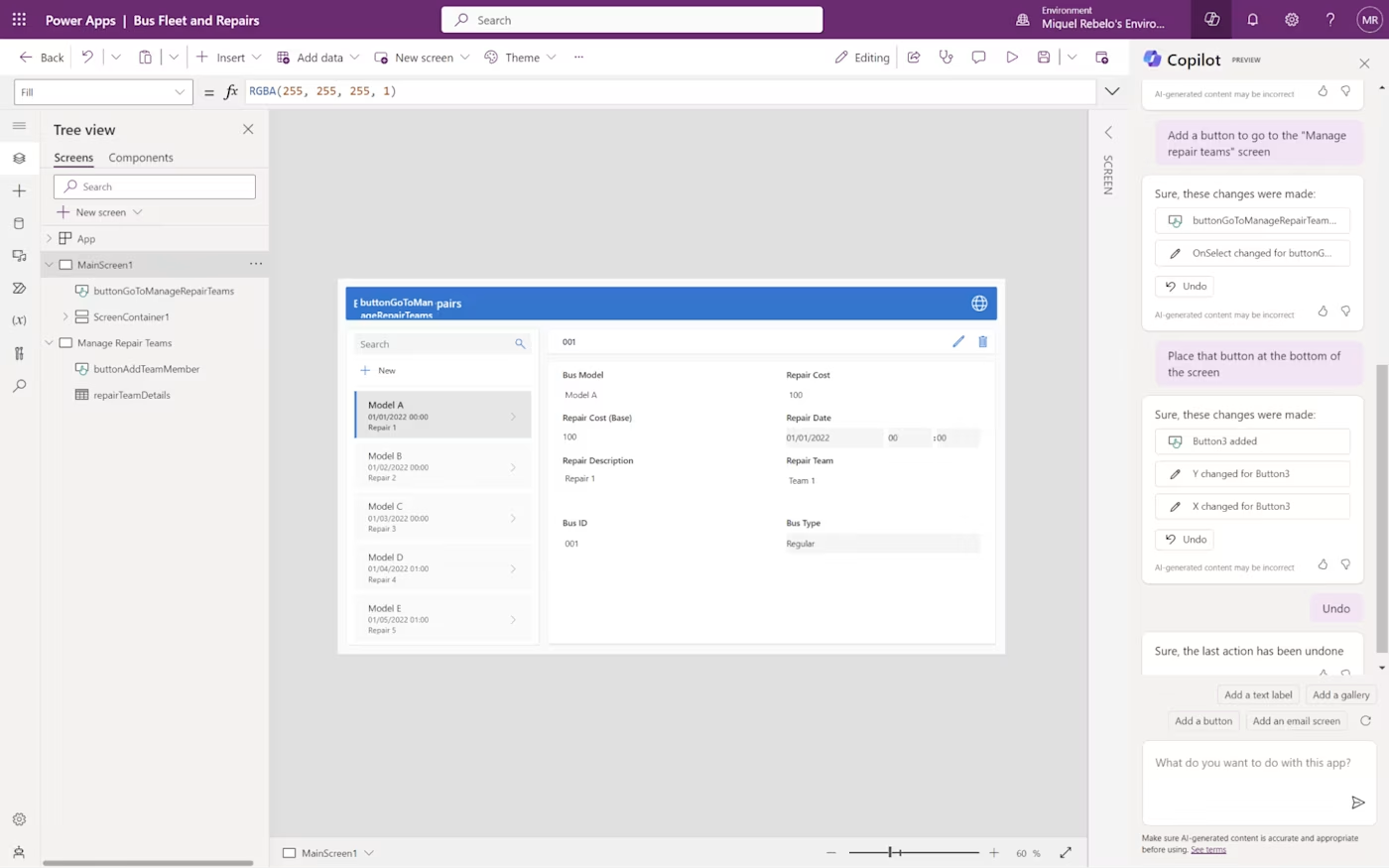Generative AI vs. Traditional AI: How Businesses Can Leverage Both

AI has become a pivotal force in modern industries, boosting both efficiency and innovation. Traditional AI relies on analyzing massive datasets to generate predictions and has long been an essential tool across various sectors. Recently, Generative AI has emerged as a groundbreaking advancement of artificial intelligence and machine learning, capable of producing original content such as text, images, and even code. Both forms of AI provide immense value, but they solve problems through different methodologies, each excelling in unique applications.
AI vs. Generative AI
Traditional AI thrives in well-structured environments where ample data exists and clearly defined goals are the focus. For example, the financial services sector frequently employs traditional AI to identify fraudulent transactions. By analyzing historical transaction patterns, these models can recognize suspicious activities. However, ongoing updates and monitoring are necessary to maintain their effectiveness.
Generative AI stands out in scenarios requiring creativity and adaptability. Consider customer service, where businesses utilize Generative AI to craft tailored responses to customer queries or complaints. By processing and understanding natural language, it produces accurate, context-aware replies, boosting customer satisfaction and easing workloads on human agents.
Differentiating between these two is essential for businesses looking to fully utilize these technologies. Understanding their distinct capabilities allows companies to cut through the buzz and focus on solutions that align with their goals, ensuring they invest in technology that creates tangible value rather than following fleeting trends.
Gen AI
Generative AI refers to artificial intelligence that can produce new content—such as images, videos, or text—based on the data it has been trained on. This process relies on advanced algorithms that create new outputs in response to specific prompts. Additionally, generative AI often utilizes machine learning (ML) to identify patterns, make predictions, and generate content using the data it processes.
For example, popular models like OpenAI's ChatGPT exemplify generative AI by using a language prediction algorithm to create coherent and contextually appropriate text responses.
On the other hand, when AI and ML are applied specifically for making predictions or analyzing trends, this approach is categorized as predictive AI.
Generative AI can be characterized in several ways:
- It creates content (such as text, images, or code) based on user-provided prompts.
- It is highly adaptable and capable of producing a wide variety of content types.
- It leverages neural networks to deliver relevant and original results.
Generative AI Use Cases
Generative AI has immense potential to accelerate or automate a wide range of tasks, making it a valuable tool for businesses. By thoughtfully integrating these tools into operations, organizations can reap significant benefits. Here are some practical applications:
Writing and Editing
GenAI tools can generate initial drafts based on prompts, provide suggestions for structure and tone, and even edit drafts for grammar, coherence, and style. Furthermore, GenAI can analyze existing literature to provide insights on topics, helping writers to find their unique voices and angles.
A great example is Jasper.
This is an adaptable AI writing assistant renowned for its intuitive interface and broad capabilities. Whether it’s creating blog posts, crafting social media captions, generating compelling sales copy, or writing detailed product descriptions, Jasper covers a wide range of writing tasks. Focusing primarily on marketing campaigns, Jasper helps marketers develop high-converting copy, engaging social media content, and structured blog outlines.
Marketing Efforts
With the complexity of modern marketing, GenAI offers invaluable support across multiple channels. It can generate tailored content for various platforms, from social media posts to blog articles, adapting to different audience segments and optimizing for SEO. GenAI can perform sentiment analysis on consumer feedback and market trends, allowing marketers to adjust campaigns in real-time.
A great example is Anyword.
Anyword positions itself as a generative AI tool specifically designed to achieve marketing goals. True to its purpose, Anyword can produce marketing copy, product descriptions, website content, and social media posts that drive conversions. It integrates seamlessly with platforms like Google Ads, Meta ads, HubSpot, Salesforce Marketing Cloud, and major social media channels, including LinkedIn. By analyzing historical data or past posts, the tool can develop new, targeted content.

Email Assistance
GenAI can analyze subject lines and email content to predict open and response rates, helping marketers refine their outreach strategies. Automating routine tasks, such as scheduling and reminders, allows teams to focus on more strategic initiatives.
A great example is Shortwave.
When it comes to AI email support, Shortwave stands out for its extensive feature set. Conveniently located as a "magic star" icon in the top-right corner of your interface, Shortwave's AI assistant opens in a user-friendly chat window to the side. One of its distinguishing features is AI-powered email search, which makes handling cluttered inboxes far easier.

Sales Efforts
By analyzing vast amounts of customer data, GenAI can identify trends and patterns, enabling sales teams to perform targeted outreach more effectively. Predictive analytics powered by GenAI can forecast sales opportunities, allowing teams to prioritize leads that are more likely to convert.
A great example is Pitch.
Rather than focusing on traditional presentation designs, Pitch streamlines the process by generating slides tailored to sales needs. Users can enter prompts, select preferred fonts and color schemes, and receive structured decks presenting key topics like lead pain points or industry challenges while framing their solutions as optimal. Following this initial setup, users can refine the deck further by simply inserting relevant statistics or customized content.
Website Building
Leveraging AI-driven design tools, users can generate entire web pages based on simple prompts or existing design templates. This democratizes web design, allowing individuals with minimal technical expertise to create professional-quality websites. GenAI excels at optimizing content for search engines and enhancing user experience through personalized recommendations.
A great example is Wix.
Wix’s Artificial Design Intelligence (ADI) tool simplifies the process of building a professional site in record time. After answering a few questions about the site's purpose and desired functions, Wix ADI generates a tailored website template complete with layouts, content suggestions, and even royalty-free images. It’s an ideal option for users who want a polished site without the hassle of designing from scratch.

App Building
By harnessing advanced natural language processing (NLP) and machine learning algorithms, developers can utilize GenAI to generate code snippets, automate testing, and even create user interfaces. This reduces the time and complexity associated with traditional coding. Through tools like GitHub Copilot, developers are provided with contextual code suggestions, enabling them to focus on higher-level design and functionality rather than getting bogged down in repetitive tasks.
A great example is Microsoft’s Copilot.
Like other Microsoft tools, Power Apps leverages Copilot, giving users an AI-powered app development assistant. Starting with a text prompt, users can describe the functionality they need—for instance, “an app for creating and sharing grocery lists”—and Copilot generates a prototype app as a starting point.
Beyond creating a basic layout, Copilot crafts a matching database schema that aligns with the app’s purpose. Through a chat interface, users can refine the app further—adding, modifying, or removing database fields using natural language instructions.

How Generative AI is Transforming Businesses
While the world is just beginning to unlock the potential of generative AI, its applications across business functions are quickly gaining traction. From enhancing customer interactions and optimizing sales and marketing strategies to revolutionizing software development and research, generative AI is becoming a critical tool for innovation and efficiency.
Customer Service
Traditionally, AI in customer service automated routine tasks and enabled self-service options but often led to customer frustration. Generative AI is set to change the game by offering tailored, multilingual chatbots that create a highly personalized and accessible experience. For more complex issues that require human intervention, generative AI tools can assist customer service representatives in real-time. By analyzing vast enterprise knowledge bases and synthesizing targeted solutions, these systems empower faster and more accurate issue resolution. This approach eliminates the frustration of outdated support systems, such as phone trees, and allows agents to deliver precise solutions with confidence.
Marketing
Generative AI is also reshaping the way businesses approach marketing. By integrating and analyzing data from disparate sources, AI significantly reduces the time needed to derive actionable insights. This enables marketers to make faster, data-driven decisions for crafting targeted ad campaigns. Instead of spending time collecting and synthesizing demographic or behavioral data, teams can focus on analyzing results and generating fresh ideas for engagement.
Tom Stein, chairman and chief brand officer at Stein IAS, emphasizes that AI has also transformed internal processes within marketing agencies. He highlights, for instance, how generative AI tools can quickly handle repetitive tasks, like drafting standardized responses for customer requests, freeing up significant time for the creative team to add value and refine outputs.
Software Development
For software developers, generative AI is streamlining nearly every stage of the development lifecycle. During the initial design and planning phases, AI analyzes complex datasets and proposes optimal configurations. Once coding begins, AI tools assist by identifying bugs, running diagnostics, and suggesting fixes. These tools are also a valuable resource for understanding unfamiliar programming languages or codebases in a fraction of the time it would take otherwise.
Because enterprise projects often involve multiple programming languages and disciplines, generative AI helps developers bridge knowledge gaps and expedite problem-solving. This enhanced efficiency accelerates deployment timelines while maintaining high-quality software standards.
Traditional AI
Traditional AI, commonly known as "narrow AI" or "weak AI," is a type of artificial intelligence designed to perform specific tasks within a defined context. These systems operate by processing a predefined set of inputs and can adapt their performance over time by learning from data. For instance, they can analyze information, make predictions, and make informed decisions—all within their programmed boundaries.
Take playing chess against a computer as an example. The AI understands the rules of the game and is programmed with a range of established strategies. When you make a move, it predicts your potential next steps and adjusts its decision accordingly. While the AI isn't inventing any new strategies, it cleverly utilizes the information at its disposal to achieve its goal—in this case, winning the match.
Traditional AI is characterized by the following traits:
- It relies on preprogrammed algorithms and established rules.
- Its design is focused on handling a limited range of tasks, constraining its scope of applications.
- It excels at processing data sets and generating predictions based on that analysis.
- Its ability to learn is restricted, as it depends on data provided and curated by human creators.
Traditional AI Use Cases
The possibilities for businesses to harness AI are vast and can seem daunting, yet adopting AI is crucial for driving growth. Failing to integrate this evolving technology could leave your business trailing behind its competitors.
Transportation and Navigation
Self-driving cars may sound like something out of sci-fi, but they're only one part of AI’s growing role in transportation. Today, AI is deeply integrated into various aspects of how we move. For example, most major mapping platforms rely on AI to interpret real-time traffic data, generate optimal routes, and predict ETAs. Similarly, many airplanes use AI-enhanced autopilot systems, factoring in weather and flight data to chart the best paths.
Research shows that integrating AI into transportation has made travel safer, more efficient, and more reliable.
Here are a few other examples of AI in transportation and navigation:
- Traffic Management Systems: These systems process road, weather, and traffic data to predict and manage congestion before it happens.
- Navigation Apps: Google Maps, Apple Maps, and Waze use location-based data collected from users to assess traffic conditions, calculate ETAs, and suggest alternate routes.
- Rideshare Services: Apps like Uber process location data and environment factors to estimate arrival times, optimize routes, and adjust fare rates dynamically.
Robots
For many, the word “robot” conjures images of humanoid machines from Star Wars or Star Trek. While those portrayals remain futuristic, robotics is already a big part of our present. From factories to homes, robots are used to save time, boost efficiency, and improve safety by taking on repetitive or dangerous tasks.
Here are key examples of real-world robots in action today:
- Aerospace: NASA’s Mars rovers, including Perseverance, exemplify robotic technology. These machines explore, collect samples, and transmit critical data from the Martian surface—tasks human astronauts can’t yet physically perform.
- Manufacturing: Since the introduction of assembly-line robots by General Motors in 1961 to perform dangerous tasks like welding, robotics has revolutionized manufacturing by increasing productivity and ensuring worker safety.
- Hospitality: Robots are stepping in to alleviate labor shortages in hotels and restaurants. From checking in guests to mixing drinks or delivering meals, they’re handling everyday tasks with efficiency.
Fraud Prevention
Cyberthreats, especially in finance, challenge both users and business owners on a daily basis. The good thing is AI helps detect and prevent fraud. AI systems analyze thousands of transactions to identify patterns of normal activity and flag anything unusual. They can automatically decline suspicious transactions, alert the user, and initiate investigations—all in real-time. If you’ve received alerts about suspicious activity on your bank account, you’ve likely benefitted from an AI-driven fraud detection system
Predictions
Thanks to their ability to process vast amounts of data, AI systems are excellent at identifying patterns and forecasting future outcomes, helping businesses make informed decisions.
Some common applications of predictive AI include:
- Maintenance Scheduling: By assessing historical data on repairs and wear patterns, predictive AI can forecast when equipment will need maintenance, preventing unexpected breakdowns and accidents.
- Predictive Modeling: This involves combining data mining with probability to estimate outcomes, helping businesses plan better strategies.
- Financial Forecasting: AI in financial forecasting is helpful in crafting investment strategies and portfolio management.
Healthcare
AI is transforming healthcare in profound ways, from robotic surgery to disease prediction. Medical professionals are increasingly partnering with AI and Big Data healthcare tools to improve patient care quality and efficiency.
Examples of AI in healthcare include:
- Early Diagnosis: AI tools analyze patient data to detect diseases early, enabling faster intervention or even prevention.
- Disease Tracking: Predictive analytics can simulate how infectious diseases might spread geographically or over time, allowing for better management strategies.
- Drug Discovery: AI can identify new uses for drugs or flag harmful interactions between different medications.
Advertising
AI has become a key player in advertising, enabling businesses to refine their strategies and improve customer engagement. From dynamic ad targeting to generating ad copy, AI brings precision to marketing.
Examples of how AI is used in advertising include:
- Ad Content Creation: AI-powered tools can generate compelling copy or visuals informed by user interactions and purchase data.
- Dynamic Ads: Platforms like Google and Facebook allow advertisers to tailor content, such as images or messaging, to specific demographics or locations.
- Budget Allocation: Advanced AI tools analyze ad performance, guiding businesses to spend more effectively by focusing on high-performing creatives at optimal times.
Analytics
Analytics is a natural fit for AI, as it excels at processing massive data sets to provide actionable insights. Businesses use AI to scale and accelerate their data analysis efforts, enabling better forecasting and decision-making.
Key applications of AI in analytics include:
- Forecasting: By analyzing historical data, AI provides accurate projections of future trends.
- Predictive Analytics: Businesses rely on AI to anticipate trends or results, improving strategic planning.
- Real-Time Monitoring: AI ensures businesses have instant access to key metrics, such as revenue and customer satisfaction, facilitating faster responses to changes.
Difference Between Generative AI and AI
The fundamental difference between AI and Generative AI lies in the complexity of their algorithms and their intended objectives.
- AI's Logical Foundation: Traditional AI thrives on structured goals and defined parameters. Its strength lies in tasks like analysis, forecasting, and decision-making, where the environment operates within clear boundaries. This makes AI indispensable for applications such as data analytics and intricate automated processes that rely on precision and order.
- Gen AI's Creative Edge: On the other hand, Generative AI pushes into innovative and dynamic territories. Rather than merely analyzing data, it uses this data as a springboard to produce novel, creative outputs. It demands an elevated level of adaptability and advanced learning mechanisms, positioning Generative AI as a breakthrough tool for creating and innovating.
Traditional AI Frameworks
Traditional AI operates on diverse algorithms, each designed for specific tasks. These systems excel at identifying patterns within data, forming the basis for AI’s ability to simulate human-like decision-making. Many traditional AI systems utilize decision trees, which resemble human logical processes. By mimicking our decision-making methods, these systems make data-based predictions and conclusions.
Machine learning forms a substantial part of AI’s capabilities. Through training data, ML algorithms learn to recognize patterns and make data-driven choices. Techniques like logistic regression and support vector machines allow AI to refine decisions over time. Supervised learning, where labeled datasets are used to train algorithms, is a classic example of AI's evolving adaptability.
Taking it further, neural networks emulate the human brain’s pattern recognition abilities. These powerful tools are central to tasks like image and speech recognition, where complex sensory data is processed. Their ability to handle vast datasets makes them invaluable for extracting meaningful insights from large-scale data.
Generative AI Frameworks
Generative AI surpasses traditional AI, diverging from narrow, task-specific capabilities to focus on creating entirely new content. Unlike the structured, analytic approaches of traditional AI, Gen AI ventures into innovation and originality, marking a significant leap forward in AI technology.
Deep learning, a subset of machine learning, forms the backbone of Gen AI. Multi-layered neural networks process unstructured data, such as text and images. These capabilities enable Gen AI to analyze and generate intricate patterns, offering immense value in data modeling and creative applications.
At the forefront of Gen AI are Generative Adversarial Networks (GANs) and Variational Autoencoders (VAEs). GANs employ a unique interaction between two neural networks—a generator and a discriminator. This generative-discriminative dynamic facilitates the creation of refined, sophisticated outputs, making GANs essential to Gen AI’s groundbreaking capabilities.
Composite AI
The real potential of AI unfolds when traditional and Generative AI are combined, a practice known as Composite AI. For example, in marketing campaigns, traditional AI can segment audiences by behavior, while Generative AI creates personalized, engaging content for each customer group. This combination amplifies marketing efforts, leading to deeper audience engagement and higher conversion rates.
Composite AI is a sophisticated form of artificial intelligence that integrates multiple AI technologies into a unified framework strategically designed to tackle complex business challenges holistically.
Core Components of Composite AI
To understand why merging AI subsidies is a good idea for businesses, let us explain what components make the Composite AI.
- Machine Learning (ML): Machine Learning is a fundamental building block of composite AI. It uses algorithms to learn from data and make predictions or decisions. Techniques like supervised, unsupervised, and reinforcement learning enable pattern detection and predictive insights.
- Deep Learning: A specialized branch of ML, deep learning utilizes layered neural networks to analyze intricate data patterns. It is particularly effective in processing unstructured data, such as images or speech, which makes it crucial for composite AI systems designed to handle diverse datasets.
- Simulation and Agent-Based Modeling: Simulation and agent-based modeling help replicate and understand complex systems and behaviors. This component is instrumental in predicting and analyzing interactions within interconnected agents and environments in composite AI systems.
- Natural Language Processing (NLP): NLP equips machines with the ability to comprehend, interpret, and generate human language. This functionality enables composite AI to process text, analyze sentiment, and facilitate user interactions through chatbots and virtual assistants.
- Computer Vision: Computer vision gives AI systems the capability to interpret and analyze visual data, such as recognizing objects or scenes. It plays a pivotal role in fields like autonomous vehicles, medical imaging, and surveillance systems.
- Graph-Based Methods: Graph structures, including knowledge graphs and ontologies, provide a systematic way to represent information and its interconnections. They enhance contextual understanding and logical reasoning within composite AI frameworks.
- Optimization Algorithms: Optimization techniques are vital for finding the most effective solutions or configurations. They support decision-making, resource allocation, and overall system performance, making AI operations more efficient.
- Symbolic AI: Symbolic AI emphasizes encoding and manipulating symbolic knowledge. It complements data-driven approaches in composite AI by enabling tasks like knowledge representation, logical reasoning, and creating explainable AI models.
- Logic and Rule-Based Systems: These approaches use formal logic and predefined rules to encode domain-specific knowledge and guide decision-making processes. They work alongside other methods to enhance system adaptability and reliability.
- Robotics and Automation: By integrating robotics into composite AI, physical tasks and processes can be automated. This expands AI beyond the digital realm, enabling interaction with the physical environment for use cases like logistics and manufacturing.
- Data Fusion and Integration: Data fusion consolidates information from various structured and unstructured sources into a unified format. This integration enhances the quality of insights and decision-making in composite AI systems.
- Decision-Making Algorithms: Using integrated insights and predictive modeling, decision-making algorithms process data to make optimal choices. These algorithms play a crucial role in improving the effectiveness of composite AI in complex scenarios.
This amalgamation enables a more comprehensive problem-solving approach, utilizing the unique strengths of each technology.
Can Composite AI Ameliorate Ethical Concerns?
When implementing artificial intelligence in business, it’s crucial to thoroughly examine how the chosen large language model (LLM) was trained. Biases are inherently present in virtually all LLMs. Even the most meticulous efforts to mitigate or eliminate these biases often fall short of complete success. This can result in outputs that, while appearing logical or well-reasoned, may significantly diverge from reality. The closer AI-generated responses come to seeming “perfect” or accurate, the more vulnerable we are, especially as we increasingly rely on AI for content creation and pay less attention to verifying its accuracy.
The dangers of such ingrained biases cannot be overstated. They risk amplifying divisions that have already troubled many societies, often exacerbated by social media algorithms that curate content to mirror our own biases. For businesses, this represents more than a technological issue—it’s a societal one. An unpredictable economic environment, erosion of legal frameworks, or a decline in workforce education are all direct threats to long-term business success. Therefore, it becomes imperative for organizations to implement AI responsibly to avoid exacerbating these divisions.
Despite published evaluations that assess how effectively certain LLMs address biases and controls that curb misuse, there are still significant risks. The rapid and diverse applications of AI often reveal new and unexpected issues, such as subtle biases or inaccurate pattern recognition, which carry the potential for significant consequences. What steps can businesses take? A proactive, ongoing validation process is essential. This ensures that biases and errors are minimized—not just for the sake of the organization but with broader societal implications in mind. Continuous checks and balances form the foundation for leveraging AI responsibly and paving the way for its effective integration into both business and everyday life.

Andriy Lekh
Other articles